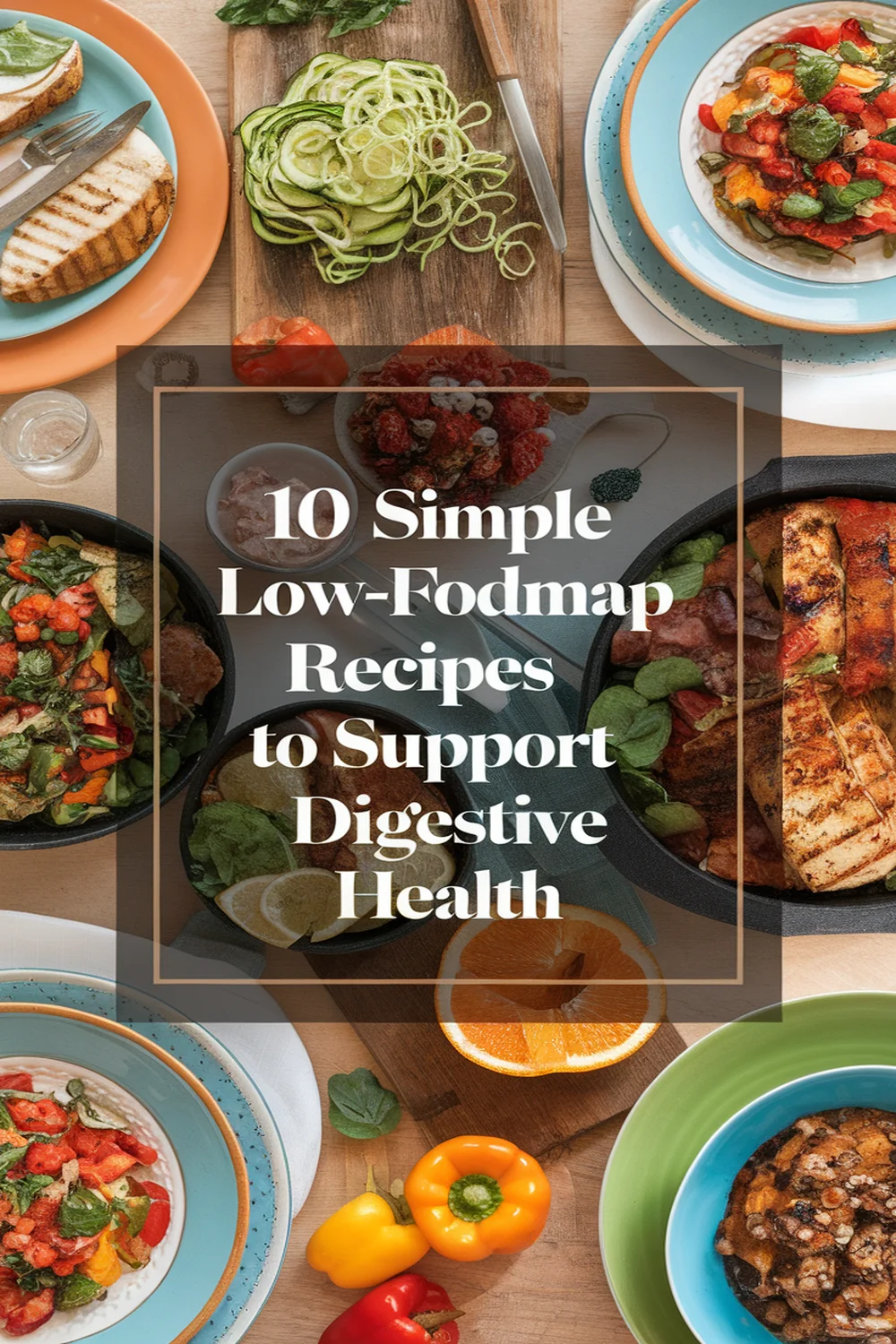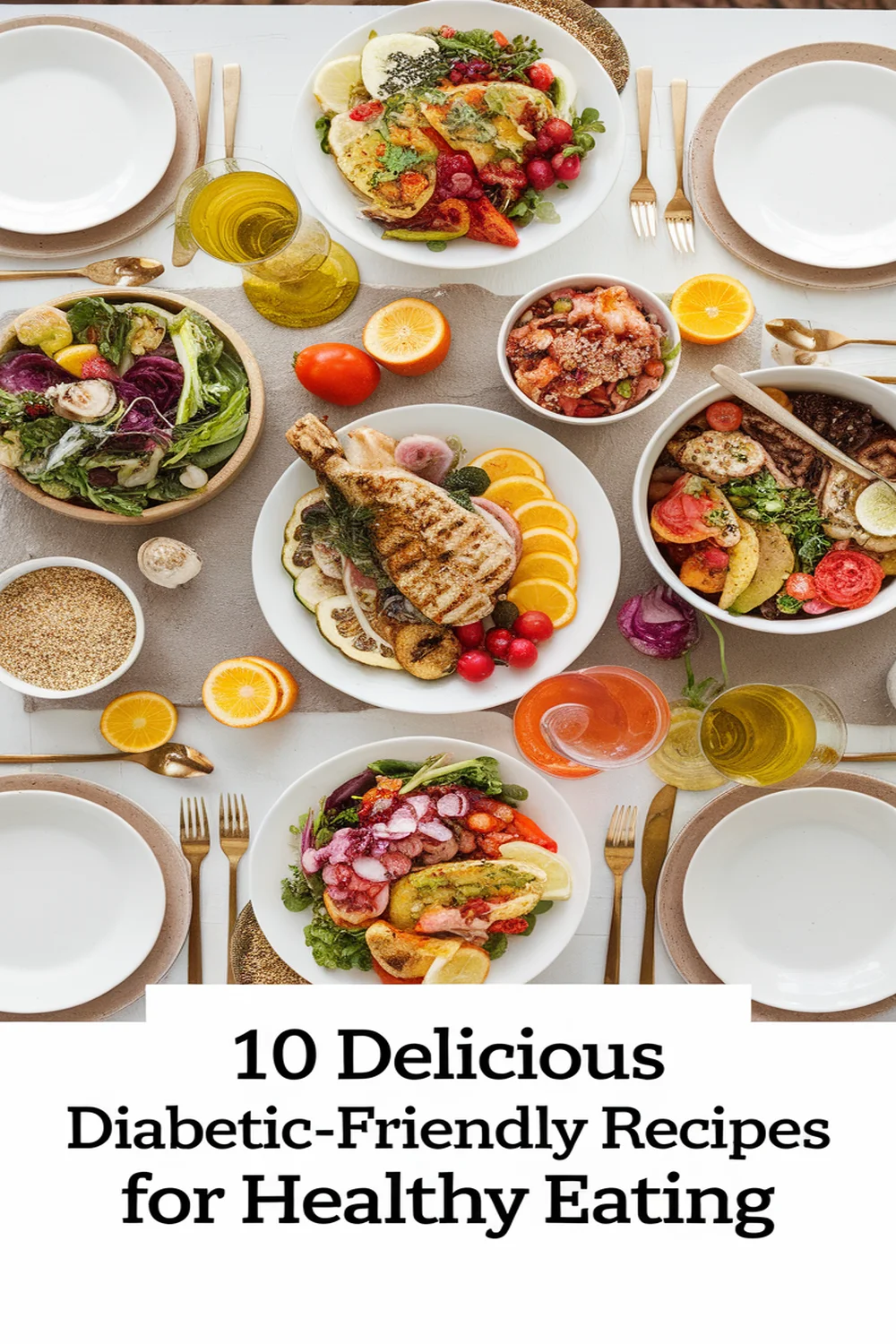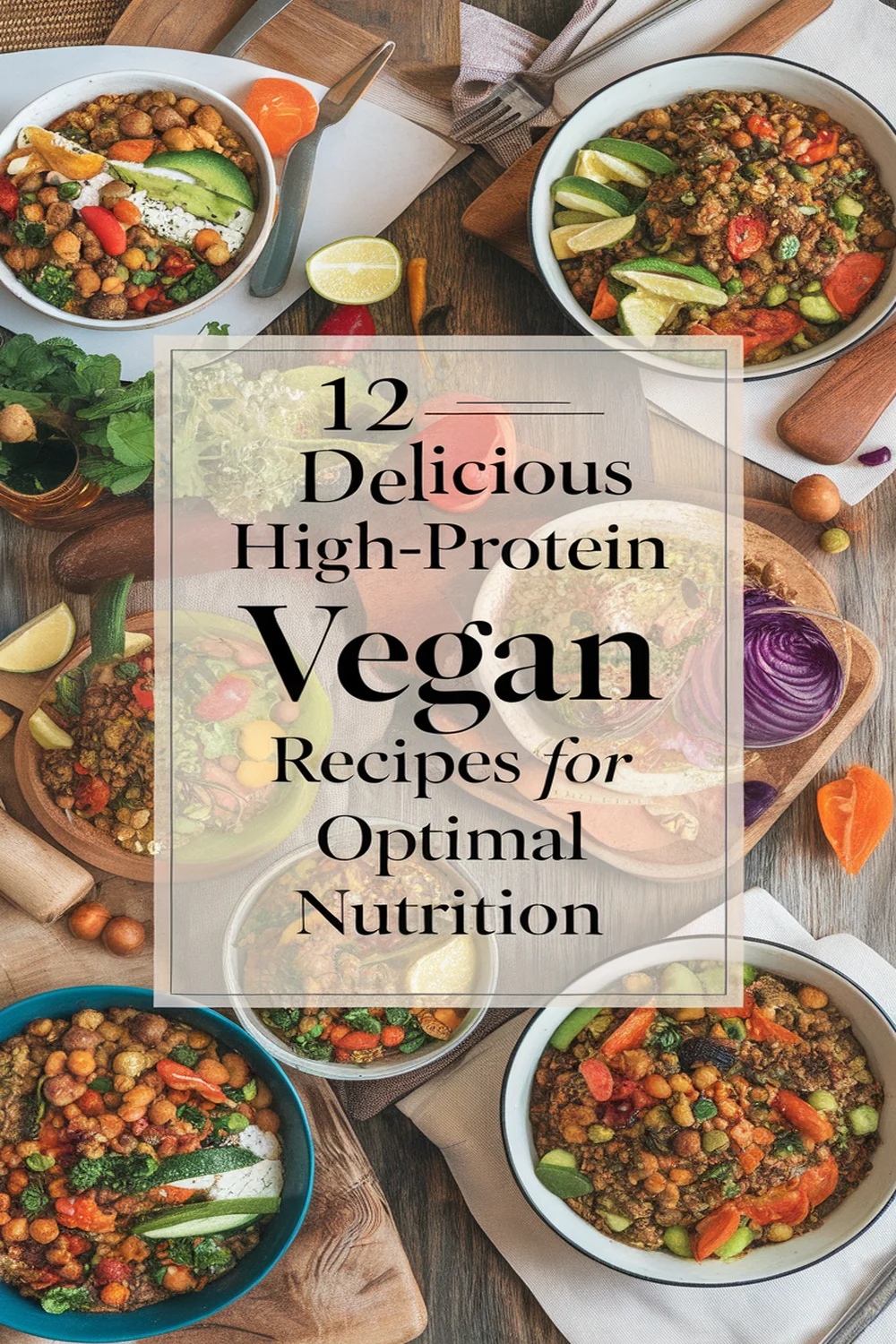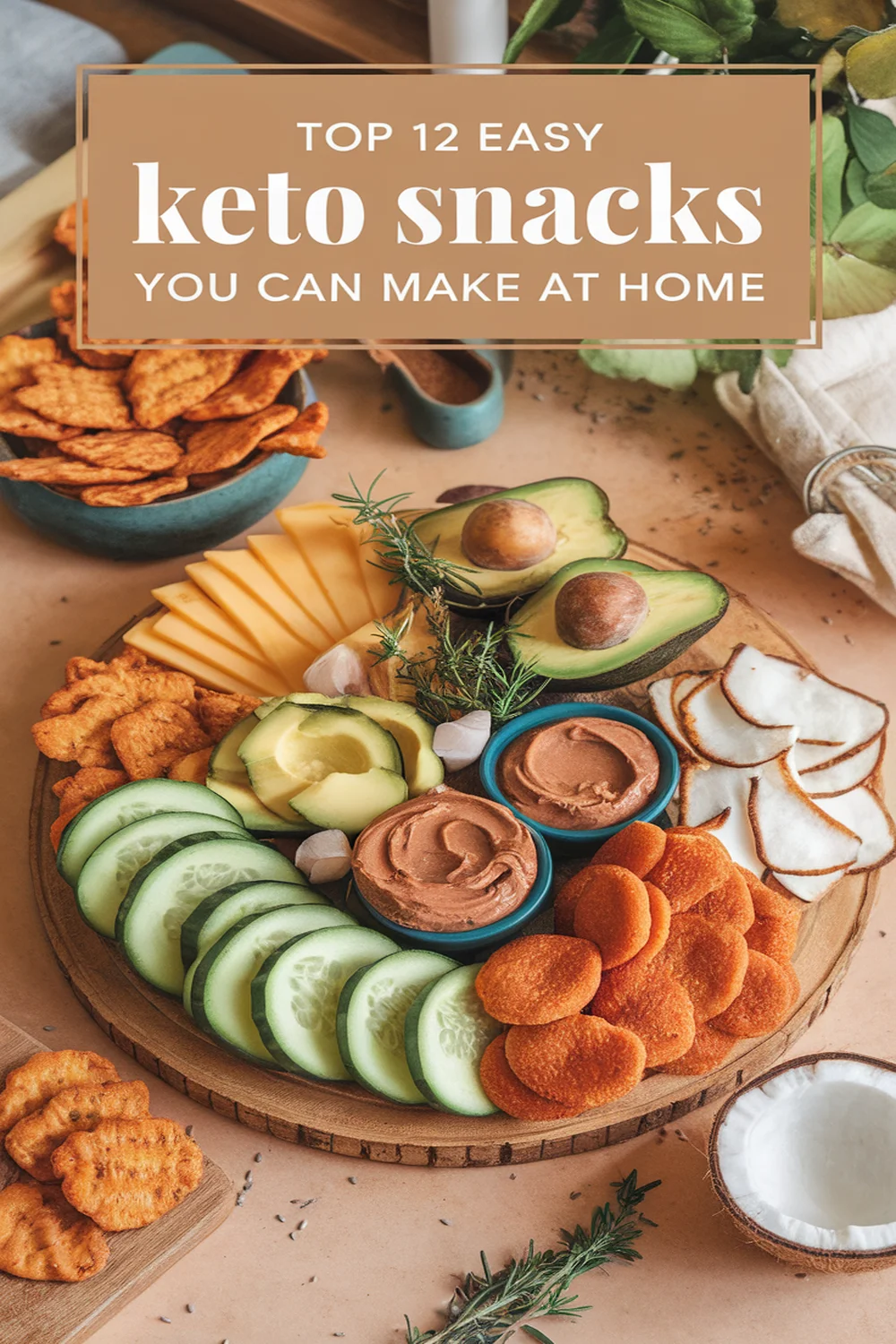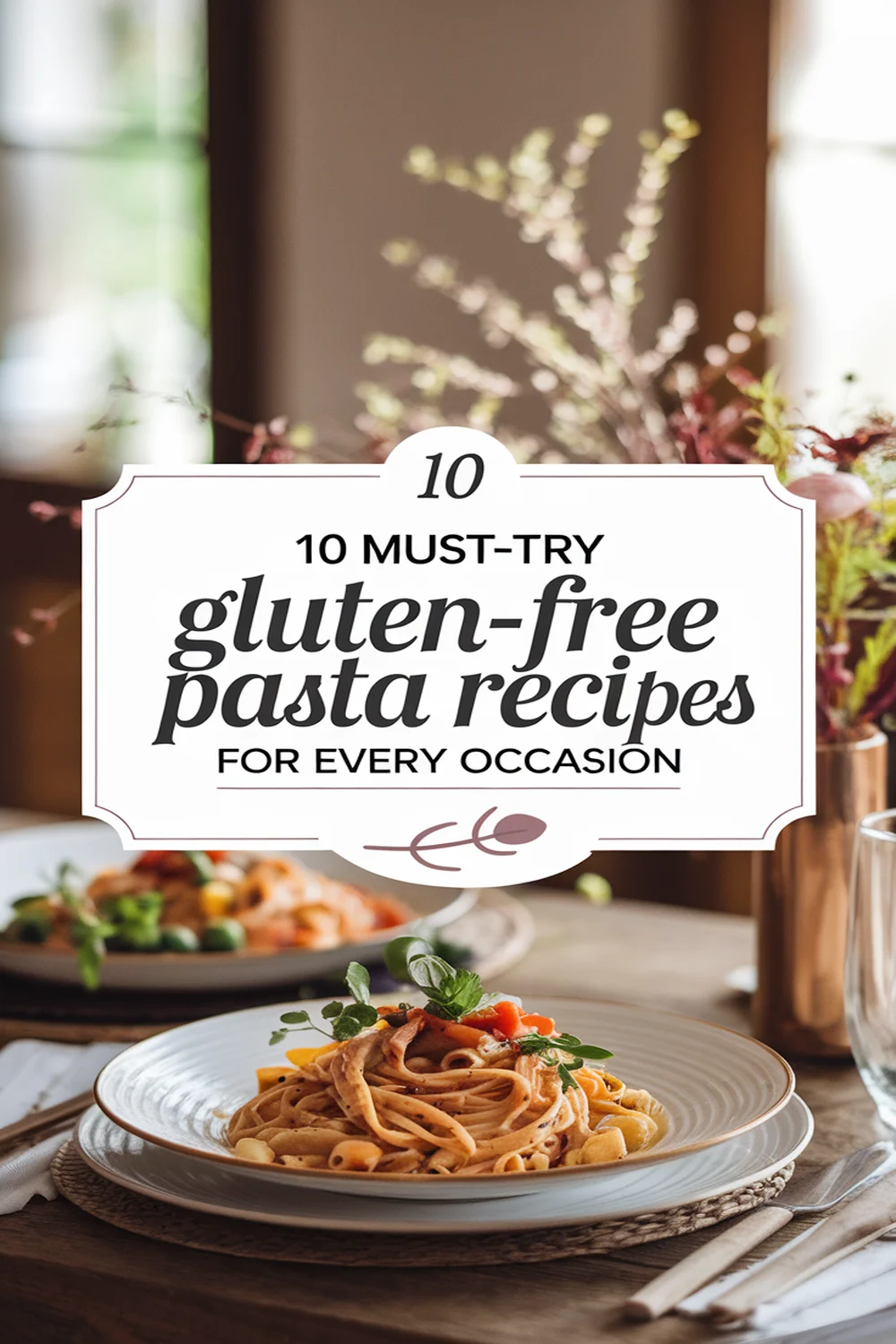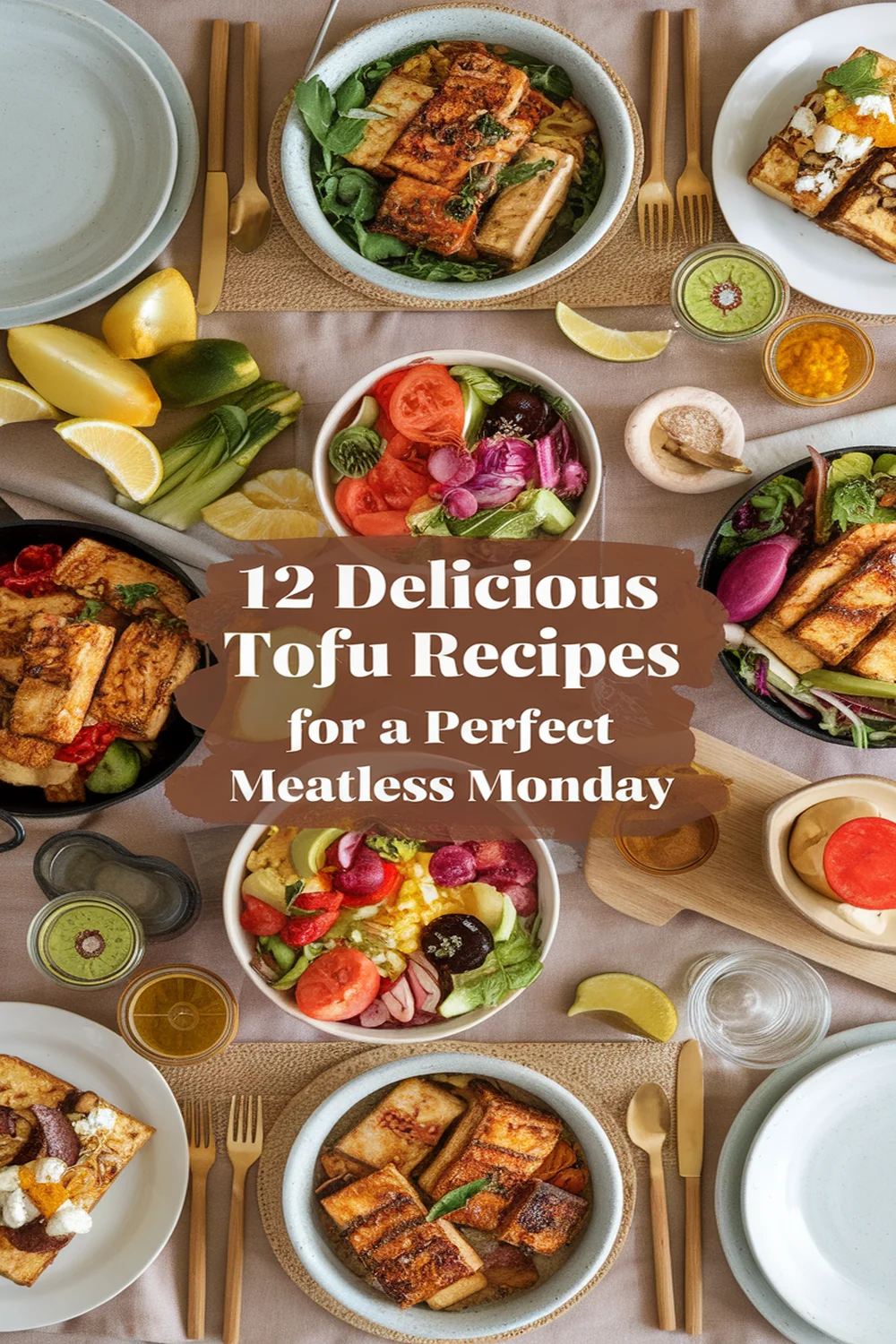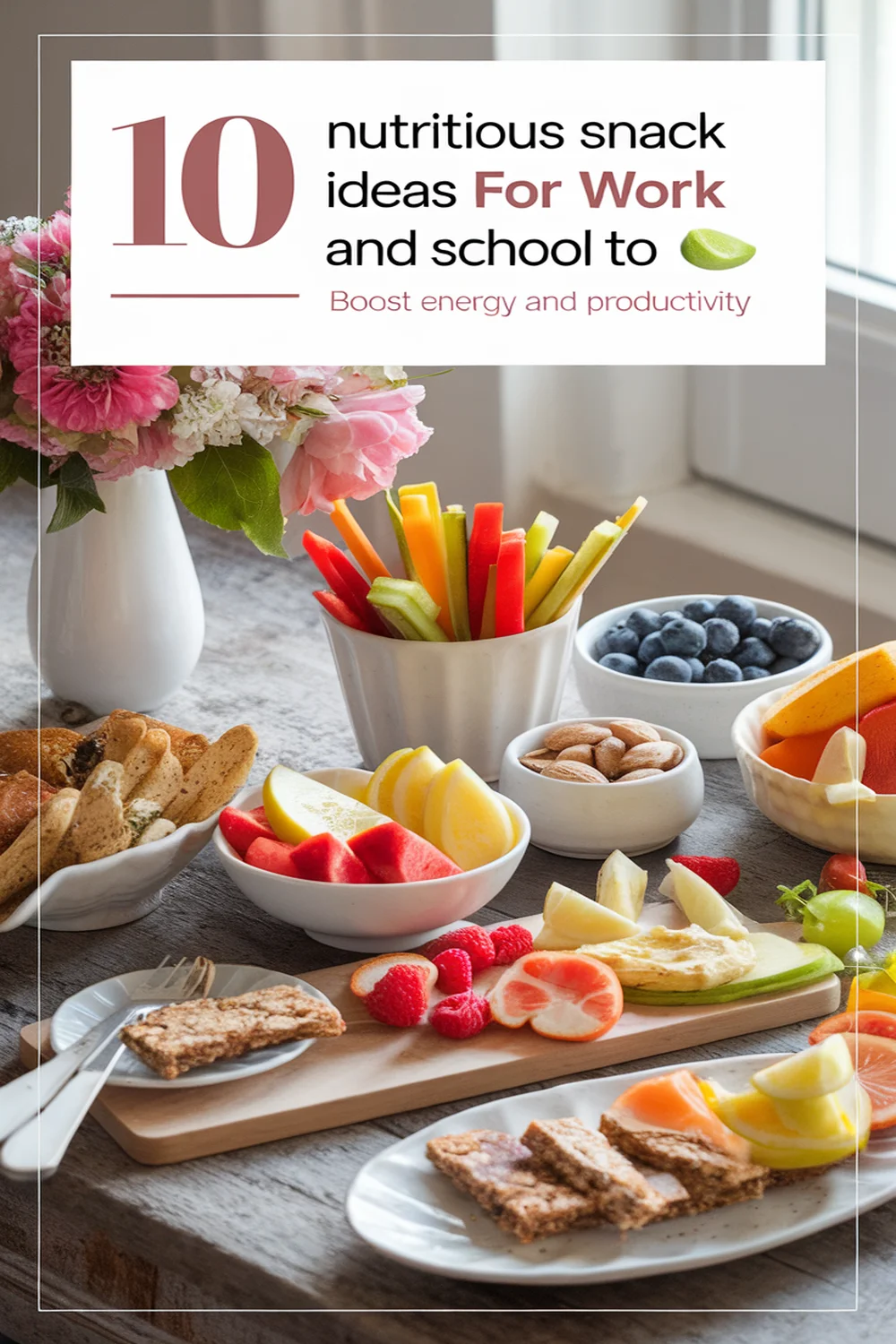This post may contain affiliate links. Please read our policy page.
You can support your digestive health with simple low-FODMAP recipes like quinoa and spinach salad, zucchini noodles with pesto, and lemon herb grilled chicken. Satisfy your snack cravings with roasted vegetable medley or oven-baked sweet potato fries. For lighter meals, enjoy low-FODMAP vegetable soup or banana oatmeal pancakes. Don’t miss out on desserts like coconut rice pudding or maple glazed carrots to sweeten your day. There’s more delicious options waiting for you to explore.
Quinoa and Spinach Salad
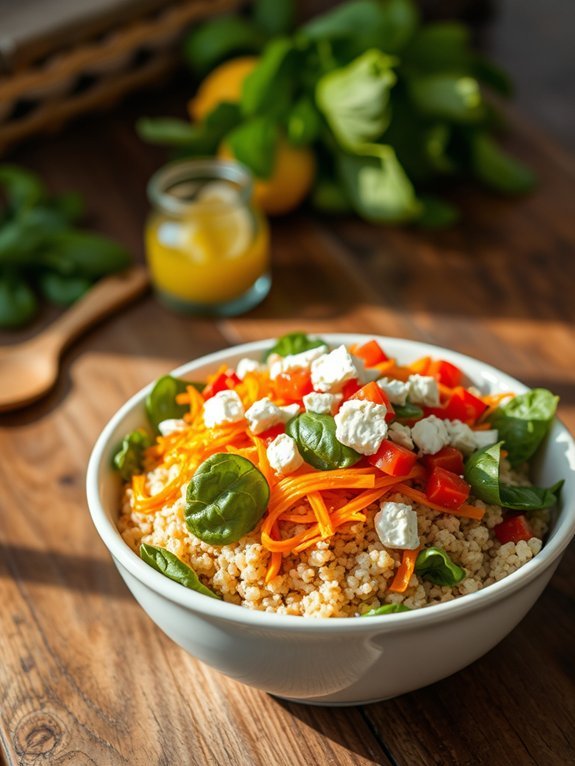
Quinoa and spinach salad is a nutritious and vibrant dish that’s perfect for a light meal or as a side. Both quinoa and spinach are packed with essential nutrients, making this salad a great choice for a low-FODMAP diet. Quinoa is a complete protein and gluten-free grain, while spinach is rich in iron and vitamins. This salad isn’t only easy to make but also versatile, allowing you to add other low-FODMAP ingredients based on your preference.
Preparing the quinoa ahead of time makes the assembly of this salad quick and convenient. By combining fresh spinach with the fluffy quinoa, topped with a simple lemon dressing, you create a rejuvenating medley of flavors and textures. This salad is ideal for meal prep, making it a great option for busy weekdays or casual gatherings with friends and family.
Ingredients:
- 1 cup quinoa
- 2 cups water
- 4 cups fresh spinach, washed and chopped
- 1 medium carrot, shredded
- 1/4 cup red bell pepper, diced
- 1/4 cup feta cheese (optional)
- 2 tablespoons olive oil
- 2 tablespoons lemon juice
- Salt and pepper to taste
To prepare the quinoa and spinach salad, start by rinsing the quinoa under cold water in a fine sieve. In a medium saucepan, combine the rinsed quinoa and water, bringing it to a boil over medium-high heat.
Once boiling, reduce the heat to low, cover, and simmer for about 15 minutes or until the quinoa is cooked through and the water is absorbed. Fluff the quinoa with a fork, then let it cool slightly.
In a large bowl, combine the spinach, carrot, red bell pepper, and feta cheese (if using). Gently fold in the cooled quinoa. Drizzle the salad with olive oil and lemon juice, then season with salt and pepper to taste.
When preparing your quinoa and spinach salad, verify that the quinoa is fully cooked and cooled before combining it with the fresh ingredients to maintain a crisp texture.
Feel free to experiment with additional low-FODMAP toppings such as cucumber, cherry tomatoes, or olives.
Storing any leftovers in an airtight container in the fridge will help keep the salad fresh for a couple of days, making it an excellent option for on-the-go meals.
Zucchini Noodles With Pesto

Zucchini noodles, also known as zoodles, are a fantastic low-FODMAP alternative to traditional pasta. They aren’t only gluten-free but also incredibly versatile and can soak up an array of flavors.
When paired with a fresh homemade pesto, these noodles create a light yet satisfying dish that’s perfect for a quick lunch or dinner. The bright, herby flavor of pesto complements the slight crunch of zucchini beautifully, making this dish both delicious and nutritious.
Making zucchini noodles is simple, and they cook quickly, so you can whip up this meal in no time. This recipe utilizes fresh basil, pine nuts, and garlic-infused oil to create a low-FODMAP pesto that’s dairy-free yet indulgent. It’s a great way to enjoy the flavors of summer all year round, and it’s perfect for anyone looking to incorporate more veggies into their diet without sacrificing flavor.
Ingredients:
- 4 medium zucchinis
- 2 cups fresh basil leaves
- 1/4 cup pine nuts
- 1/4 cup garlic-infused olive oil (ensure it’s low-FODMAP)
- 1/4 teaspoon salt (or to taste)
- 1/4 teaspoon black pepper (or to taste)
- Optional: cherry tomatoes for garnish
To prepare the dish, first, spiralize the zucchinis to create noodles and set them aside. In a food processor, combine the fresh basil, pine nuts, garlic-infused olive oil, salt, and pepper. Process the mixture until it reaches your desired pesto consistency.
In a non-stick skillet over medium heat, sauté the zucchini noodles for 2-3 minutes until just tender but still slightly crisp. Remove from the heat and mix the zucchini noodles with the pesto until well coated.
When making zucchini noodles, it’s essential not to overcook them, as they can become mushy. To keep the noodles al dente, aim for a short cooking time, and consider salting the zucchini beforehand to draw out excess moisture.
Additionally, you can customize the pesto by adding nutritional yeast for a cheesy flavor or adjusting the amount of pine nuts for your preference. Top with cherry tomatoes for a burst of color and flavor!
Recommended Items
Discover our favorite products and kitchen tools to make your low FODMAP cooking a breeze!
Products
Lemon Herb Grilled Chicken

Lemon Herb Grilled Chicken is a revitalizing and flavorful dish that brings together the vibrant tang of lemon with a mix of aromatic herbs. This Low-FODMAP recipe is perfect for those looking to enjoy a delicious meal without the discomfort often associated with high-FODMAP foods.
The zesty marinade elevates the chicken’s flavor while keeping it juicy and tender on the grill, making it an ideal choice for summer barbecues or cozy family dinners. Marinating the chicken in a mix of lemon juice, olive oil, and herbs not only enhances its taste but also guarantees that the chicken remains moist during cooking.
Pair the grilled chicken with a fresh salad or low-FODMAP vegetables for a complete meal that satisfies both your palate and dietary needs. With minimal preparation and cooking time, this dish is as convenient as it’s delightful.
- 4 boneless, skinless chicken breasts
- 1/4 cup fresh lemon juice
- 1/4 cup olive oil
- 2 tablespoons fresh parsley, chopped
- 2 tablespoons fresh rosemary, chopped
- 1 tablespoon fresh thyme leaves
- Salt and pepper to taste
In a medium bowl, whisk together the lemon juice, olive oil, chopped parsley, rosemary, thyme, salt, and pepper to create the marinade. Place the chicken breasts in a resealable bag or shallow dish, pour the marinade over the chicken, and let it marinate in the refrigerator for at least 30 minutes (up to 4 hours for a more intense flavor).
Preheat the grill to medium-high heat, remove the chicken from the marinade, and grill each breast for about 6-7 minutes per side, or until the internal temperature reaches 165°F (75°C).
To guarantee the best taste and texture, be careful not to overcook the chicken, as this can lead to dryness. If you have leftovers, they can be stored in an airtight container in the refrigerator for up to three days.
Consider using the leftover chicken in salads or wraps for a quick meal. Additionally, feel free to experiment with other low-FODMAP herbs and spices to suit your flavor preferences, enhancing the dish and making it your own.
Roasted Vegetable Medley
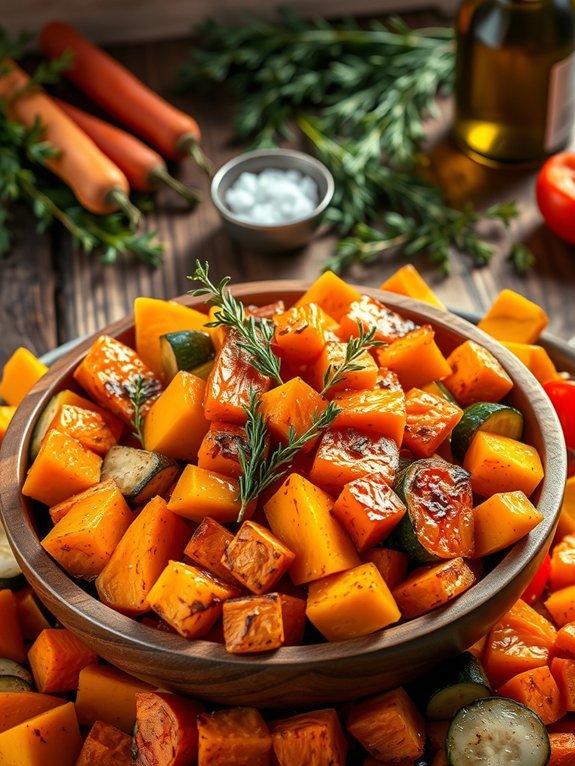
Roasted Vegetable Medley is a delightful and flavorful dish that embodies the essence of easy, healthy cooking. Perfect for those following a Low-FODMAP diet, this medley brings together a vibrant array of seasonal vegetables that not only satisfies your taste buds but also fuels your body with essential nutrients.
Roasting the vegetables enhances their natural sweetness and creates a lovely caramelization, making them a fantastic accompaniment to any main dish or a scrumptious standalone option.
Preparing this roasted vegetable medley is a wonderful opportunity to experiment with different vegetables based on your preferences or what’s in season. The versatility of this dish allows you to swap in your favorite Low-FODMAP vegetables, while still maintaining a delicious balance of flavors.
Paired with herbs and a touch of olive oil, these vegetables come together beautifully, creating a colorful and appetizing side dish that appeals to all palates.
Ingredients:
- 1 cup carrots, sliced
- 1 cup zucchini, diced
- 1 cup bell peppers (red or yellow), chopped
- 1 cup butternut squash, cubed
- 2 tablespoons olive oil
- 1 teaspoon dried thyme
- 1 teaspoon dried oregano
- Salt and pepper to taste
Preheat your oven to 425°F (220°C). In a large mixing bowl, combine all the chopped vegetables, drizzle with olive oil, and sprinkle with thyme, oregano, salt, and pepper. Toss the vegetables until they’re well coated.
Spread the mixture in a single layer on a baking sheet lined with parchment paper. Roast in the preheated oven for about 25-30 minutes, or until the vegetables are tender and slightly browned, stirring halfway through to guarantee even cooking.
When preparing your roasted vegetable medley, consider experimenting with different herbs and spices to find the combination that best suits your taste. You can also add a splash of balsamic vinegar or lemon juice before serving for an extra layer of flavor.
If you have leftovers, they can be stored in the refrigerator for a few days and can be enjoyed cold in salads or reheated as a side with your favorite protein. Enjoy your culinary journey with this fun and nutritious dish!
Coconut Rice Pudding

Coconut Rice Pudding is a delightful dessert that beautifully combines creamy coconut milk with velvety rice for a comforting dish that’s perfect for those following a low-FODMAP diet. With its subtle sweetness and aromatic flavors, this pudding can be enjoyed warm or chilled, making it versatile for any occasion.
Its simplicity makes it a great choice for both novice and experienced cooks, as the ingredients come together easily, creating a comforting treat that offers satisfaction in every spoonful.
Using only a few basic ingredients, this Coconut Rice Pudding isn’t only low-FODMAP but also vegan and gluten-free. The creamy texture of the dish comes from the coconut milk, while the rice adds a satisfying bite.
You can customize this recipe by adding toppings like fresh fruit or a sprinkle of cinnamon for extra flavor. This dish not only satisfies a sweet tooth but also provides a burst of tropical bliss with each bite.
- 1 cup jasmine rice
- 4 cups water
- 1 can (14 oz) coconut milk
- 1/2 cup maple syrup or sugar
- 1 tsp vanilla extract
- Pinch of salt
- Fresh fruit or shredded coconut for garnish (optional)
In a medium saucepan, bring the water to a boil, then add the jasmine rice and a pinch of salt. Reduce the heat to low, cover, and simmer for about 15-18 minutes or until the rice is fully cooked and has absorbed the water.
Stir in the coconut milk, maple syrup, and vanilla extract, then simmer uncovered for an additional 10 minutes, stirring frequently until the mixture thickens to your desired consistency.
For best results, let the Coconut Rice Pudding cool slightly before serving, as it will continue to thicken as it cools. If you’re storing leftovers, consider adding a little splash of coconut milk when reheating to maintain the creamy texture.
Feel free to experiment with garnishes—some fresh mango or a sprinkle of toasted coconut can elevate the flavors even further, adding both visual appeal and extra taste!
Step-by-Step Cooking Guide
Shrimp Stir-Fry With Bell Peppers

Shrimp stir-fry with bell peppers is a fantastic dish that isn’t only low in FODMAPs but also bursting with flavor and color. Packed with protein from shrimp and an array of vitamins from the bell peppers, this easy, quick meal is perfect for a weeknight dinner. The vibrant combination of red, yellow, and green bell peppers not only makes this dish visually appealing but also adds sweetness and crunch, making it a delightful addition to your low-FODMAP repertoire.
For this recipe, you can use either fresh or frozen shrimp. Just be certain to thaw the shrimp properly if using frozen. Additionally, the inclusion of a few simple seasonings guarantees that this dish remains low-FODMAP while still tantalizing your taste buds. Feel free to adjust the amount of vegetables based on your preference or add other low-FODMAP veggies such as carrots or zucchini to make it your own.
- 1 pound raw shrimp, peeled and deveined
- 1 tablespoon olive oil
- 1 red bell pepper, sliced
- 1 yellow bell pepper, sliced
- 1 green bell pepper, sliced
- 2 teaspoons ginger, minced (or grated)
- 2 tablespoons gluten-free soy sauce
- 1 tablespoon rice vinegar
- Salt and pepper to taste
- Cooked rice or quinoa for serving
In a large skillet or wok, heat the olive oil over medium-high heat. Once the oil is hot, add the minced ginger and stir-fry for about 30 seconds until fragrant.
Add the shrimp and cook until they turn pink and opaque, about 2-3 minutes. Toss in the sliced bell peppers and stir-fry for an additional 3-4 minutes, just until the peppers are tender-crisp.
Finally, drizzle the gluten-free soy sauce and rice vinegar over the mixture, stirring to combine, and season with salt and pepper to taste.
When cooking shrimp, be mindful not to overcook them, as they can become rubbery. To guarantee the perfect texture, keep a close eye on the color change. If you want to add a bit more depth to this dish, consider incorporating low-FODMAP herbs like cilantro or parsley for garnish.
Additionally, serving this stir-fry over cooked rice or quinoa not only enhances the dish but also provides a satisfying base to soak up all the delicious flavors.
Oven-Baked Sweet Potato Fries
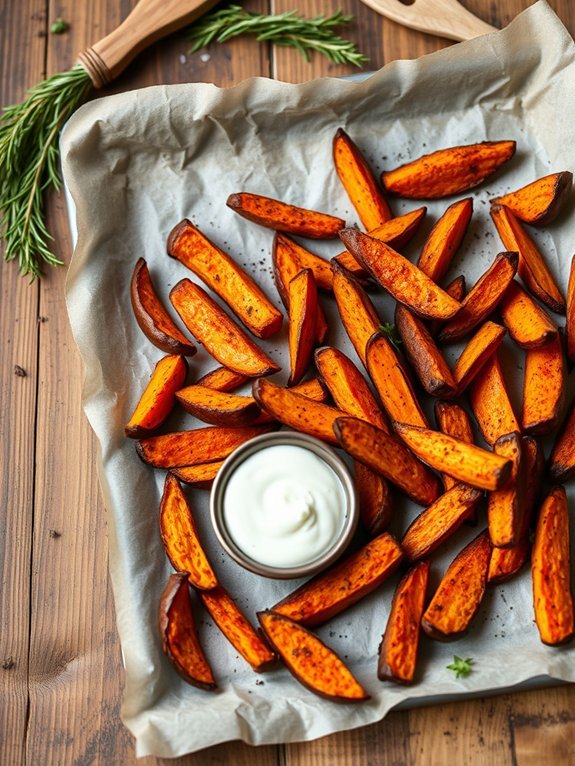
Oven-Baked Sweet Potato Fries are a delicious and healthier alternative to traditional fries, perfect for anyone following a low-FODMAP diet. These sweet potato fries aren’t only crispy on the outside and tender on the inside, but they’re also packed with nutrients. Sweet potatoes are rich in vitamins, minerals, and antioxidants, making them a fantastic addition to your meal.
Making oven-baked sweet potato fries is both simple and satisfying. You can customize the seasonings according to your taste preferences, rendering them a versatile option for family dinners, parties, or as a tasty snack. These fries pair wonderfully with a variety of low-FODMAP dipping sauces, enhancing your overall dining experience.
Ingredients:
- 2 large sweet potatoes
- 2 tablespoons olive oil
- 1 teaspoon smoked paprika
- 1 teaspoon ground cumin
- 1 teaspoon salt
- Freshly ground black pepper (to taste)
Preheat your oven to 425°F (220°C). Begin by peeling the sweet potatoes, then slice them into thin, even wedges or matchsticks. In a large mixing bowl, toss the sweet potato slices with olive oil, smoked paprika, ground cumin, salt, and black pepper until evenly coated. Spread the seasoned sweet potatoes in a single layer on a baking sheet lined with parchment paper. Bake for 25-30 minutes, flipping the fries halfway through, until they’re golden brown and crispy.
When making oven-baked sweet potato fries, it’s important to ascertain that the fries are cut evenly to promote even cooking. For extra crispiness, you can soak the cut sweet potatoes in cold water for about 30 minutes before coating them with oil and seasonings.
Additionally, avoid overcrowding the baking sheet, as this can lead to steaming rather than crisping.
Low-FODMAP Vegetable Soup
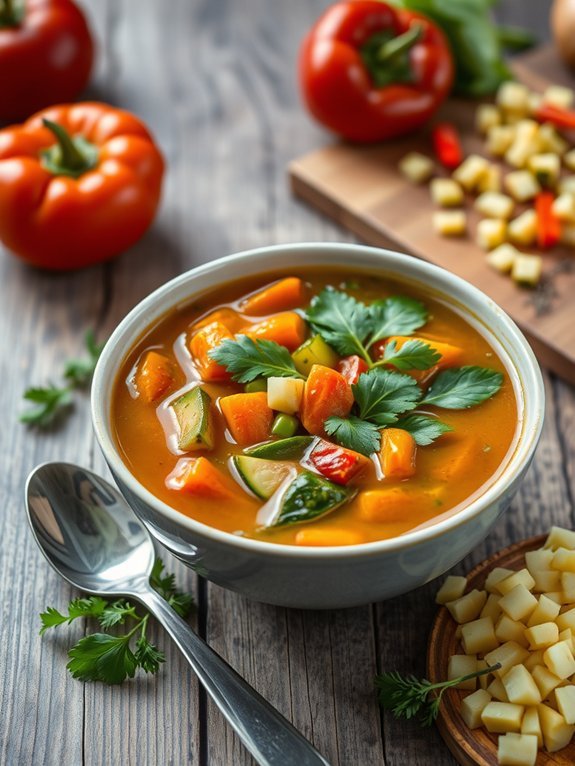
Low-FODMAP Vegetable Soup is a delicious and satisfying dish, perfect for anyone looking to maintain a low-FODMAP diet without sacrificing flavor. This soup combines a variety of seasonal vegetables cooked to tender perfection in a light, savory broth. It’s not only a great way to warm up during chilly days, but it also serves as an excellent choice for meal prepping, since it’s easy to store and reheat.
Making a Low-FODMAP Vegetable Soup is a simple process that allows you to get creative with the vegetables you use, accommodating your taste preferences and seasonal availability. The key to this soup’s flavor lies in the use of low-FODMAP ingredients, ensuring it’s gut-friendly while still being packed with nutrients. Serve it as a light lunch or alongside a protein of your choice for a heartier meal.
Ingredients:
- 2 tablespoons olive oil
- 1 large carrot, diced
- 1 large zucchini, diced
- 1 red bell pepper, diced
- 1 cup green beans, trimmed and cut into 1-inch pieces
- 1 cup spinach leaves
- 4 cups low-sodium vegetable broth
- 1 teaspoon dried oregano
- 1 teaspoon dried thyme
- Salt and pepper to taste
- Fresh parsley for garnish (optional)
In a large pot, heat the olive oil over medium heat. Add the diced carrots and bell peppers, sautéing them for about 5 minutes until they’re slightly softened.
Then, stir in the zucchini, green beans, vegetable broth, oregano, and thyme. Bring the mixture to a boil, reduce the heat, and let it simmer for about 15 minutes, or until all the vegetables are tender.
Ultimately, add the spinach leaves and allow them to wilt for another 2-3 minutes. Season with salt and pepper to taste, and garnish with fresh parsley if desired before serving.
When making this soup, feel free to swap in and out different low-FODMAP vegetables depending on your personal preferences or what’s in season. For added protein, consider incorporating cooked chicken or tofu.
Also, remember that homemade broth can be a great way to control the ingredients, ensuring it adheres to low-FODMAP guidelines. Lastly, store any leftovers in an airtight container in the fridge for up to three days, or freeze portions for future meals. Enjoy your healthy and flavorful low-FODMAP adventure!
Banana Oatmeal Pancakes

Banana oatmeal pancakes are a wonderful way to enjoy a delicious breakfast while adhering to a low-FODMAP diet. These fluffy pancakes not only provide a satisfying start to your day but also incorporate nutritious ingredients like bananas and oats, making them a wholesome option. The natural sweetness of ripe bananas eliminates the need for added sugars, allowing you to savor each bite while keeping your tummy happy.
Making banana oatmeal pancakes is quick and simple, which makes them an ideal choice for busy mornings. This recipe can easily be scaled to suit larger appetites or a weekend brunch with friends and family. By using gluten-free oats and lactose-free milk, you can guarantee that these pancakes remain FODMAP-friendly while still being enjoyable for everyone.
Ingredients:
- 1 cup rolled oats (gluten-free if needed)
- 1 ripe banana
- 1 cup lactose-free milk (or a compliant dairy-free alternative)
- 1 large egg
- 1 teaspoon baking powder
- 1 teaspoon vanilla extract
- Pinch of salt
- Cooking oil or butter (for frying)
To cook the pancakes, blend the rolled oats in a blender until they reach a flour-like consistency. Then, add the ripe banana, lactose-free milk, egg, baking powder, vanilla extract, and salt. Blend until the mixture is smooth and well combined.
Heat a non-stick skillet over medium heat and add a little cooking oil or butter. Pour small amounts of the batter onto the skillet to form pancakes. Cook for about 2-3 minutes on one side or until bubbles form on the surface, then flip and cook for an additional 1-2 minutes until golden brown.
For the best results, make sure your bananas are nicely ripe, as they provide the best flavor and sweetness. You can customize these pancakes by adding low-FODMAP toppings such as pure maple syrup, fresh berries, or a sprinkle of cinnamon.
If you’re batch cooking, simply store any leftovers in the refrigerator for up to a few days, or freeze them for an easy breakfast option later on. Just reheat before serving for a warm and delightful meal.
Maple Glazed Carrots
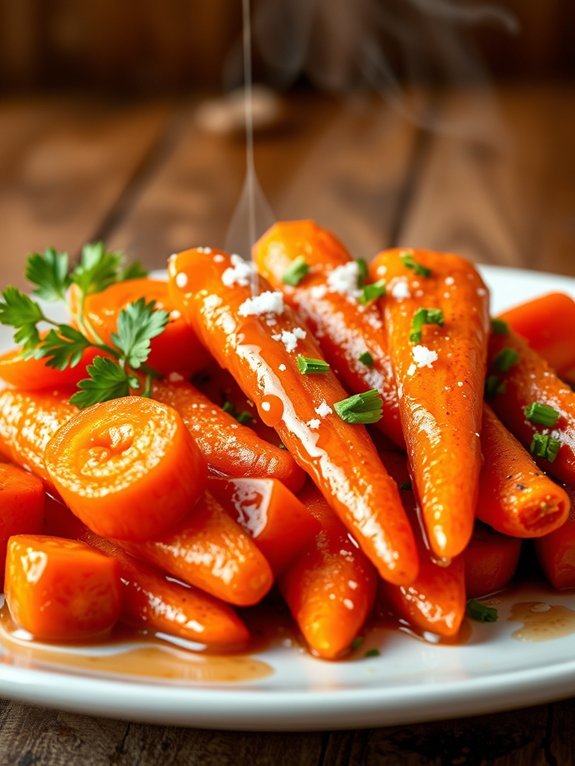
Maple glazed carrots are a delightful side dish that brings together the natural sweetness of carrots and the rich, warm flavor of maple syrup. This dish isn’t only visually appealing but also offers a lovely balance of flavors that can complement a variety of main courses.
Plus, it’s Low-FODMAP, making it suitable for those looking to manage their digestive health while enjoying a tasty meal.
The vibrant orange color of the carrots, enhanced by the glossy maple glaze, can brighten up your dinner plate. This recipe is easy to prepare, yet it impresses guests with its gourmet appeal. It’s perfect for a holiday feast, a family gathering, or a simple weeknight dinner when you want something a little bit special without a lot of fuss.
- 1 pound of baby carrots or sliced regular carrots
- 2 tablespoons of pure maple syrup
- 2 tablespoons of unsalted butter
- Salt, to taste
- Pepper, to taste
- Fresh parsley, chopped (for garnish)
In a large skillet, melt the butter over medium heat and add the baby carrots. Sauté for about 5 minutes, stirring occasionally, until the carrots start to soften.
Add the maple syrup, salt, and pepper, and continue to cook for an additional 5-7 minutes, or until the carrots are tender and the glaze has thickened slightly. Remove from heat and garnish with fresh parsley before serving.
When cooking maple glazed carrots, be mindful of the cooking time to achieve the perfect tenderness without overcooking them, which can cause them to lose their bright color and crisp texture.
If using regular carrots, make sure to cut them into uniform pieces to guarantee even cooking. You can also experiment by adding a sprinkle of cinnamon or a dash of balsamic vinegar to adjust the flavor to your liking!

